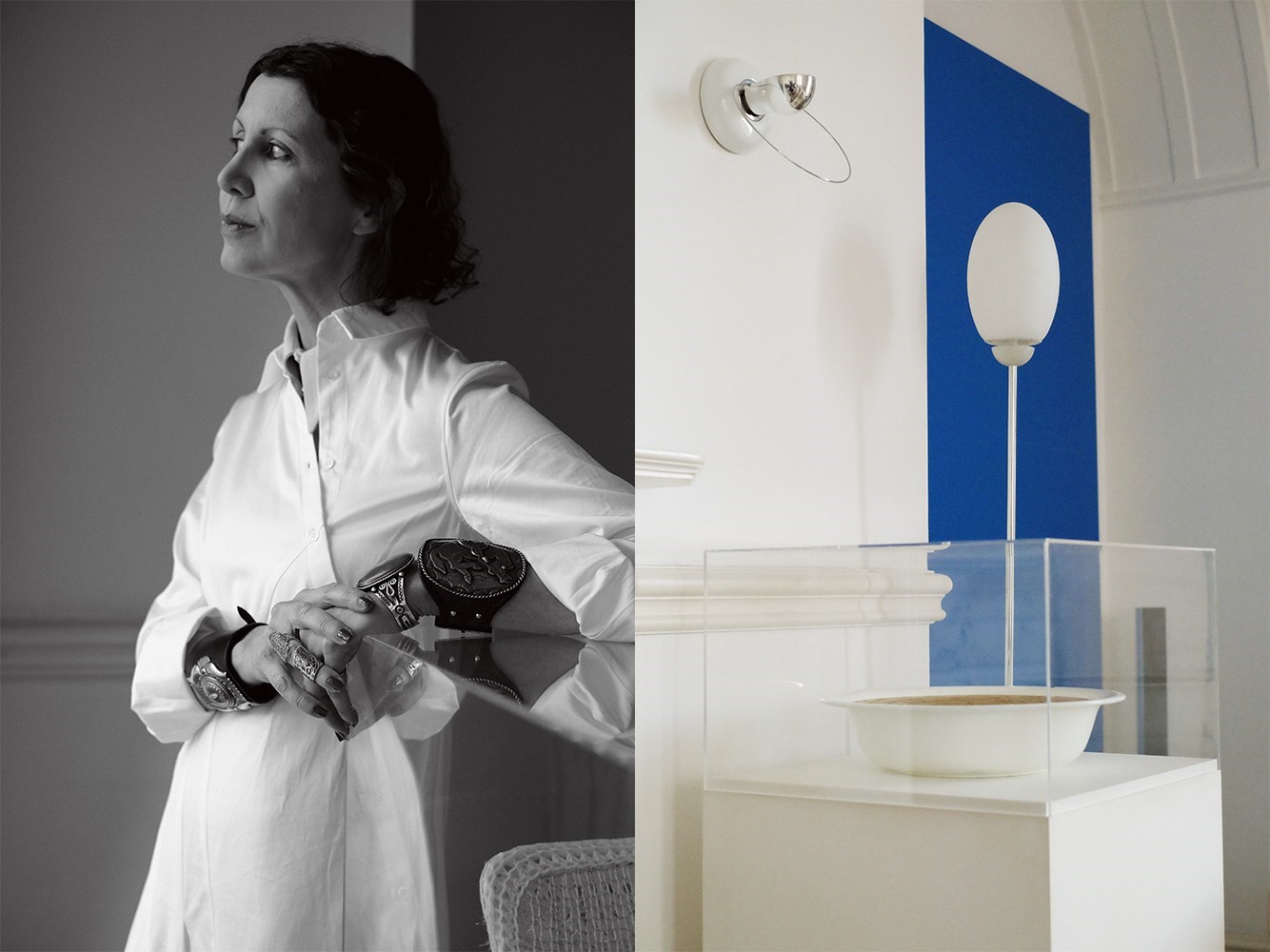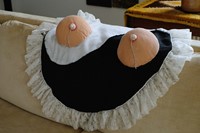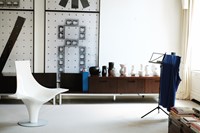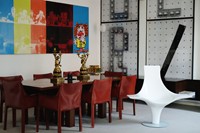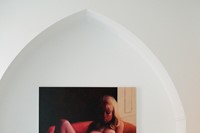Valeria Napoleone does not live in a house like yours – or mine, for that matter. Behind the classical walls of the Italian-born art collector’s leafy Kensington abode, lays an expansive collection of contemporary masterpieces. The ground-floor sitting room, for example, reveals a startling selection of works by pioneering female artists such as Lily Van der Stokker, Goshka Macuga and Guan Xiou – all displayed with loving causality, as though to reassure guests (and certainly her three children: Federico, Gregorio and Letizia) that this is a family home, and not a gallery.
“We overload ourselves with artwork, we are totally bombarded, visually,” she says warmly, gesturing to the room’s four walls in a broad circular motion. “But, not everything is here in the house, some of it is in storage, we rotate things organically when pieces come and go,” she adds. Napoleone – who breezes past a pink silk Julie Verhoeven pillow that’s delightfully crafted to resemble a splayed vagina – takes a pew on a tall chair that elevates her willowy stature. Her graceful poise and sunny disposition is at one with the first of today’s outfits: a nude Issey Miyake blouse, printed Pucci palazzo pants and electric blue YSL platforms, worn over striped socks.
"Art allows me to explore the world in a way that otherwise I wouldn’t be conscious of” – Valeria Napoleone
Napoleone started her now-sizeable collection over 18 years ago, having completed a Masters degree in art gallery administration from The Fashion Institute of Technology in New York. At the time, she recalls, “I was very well aware of the underrepresentation of women artists in museums and galleries”. Her first, (somewhat serendipitous) purchase was a small, black and white Carol Shadford photograph of “abstracted bubbles”, bought from a small, non-profit gallery in Williamsburg. “It was a revelation to me. I remember sitting with the piece and my husband in a café afterwards and just feeling so connected to this photograph,” she enthuses. “I turned to my husband and said, ‘I’m going to create a collection of work by female artists’”.
That she did – amassing a diverse and stimulating oeuvre that gathered momentum after she and her husband [Gregorio] relocated to London, where the art scene thrives on provocative, up-and-coming talents. “From that moment on I never looked back. To me, art represents an opportunity to grow my mind, my emotions, my passions,” she gushes, eyes as wide as saucers. “I feel as though I am part of a special community of creative, gifted minds. Art allows me to explore the world in a way that otherwise I wouldn’t be conscious of.”
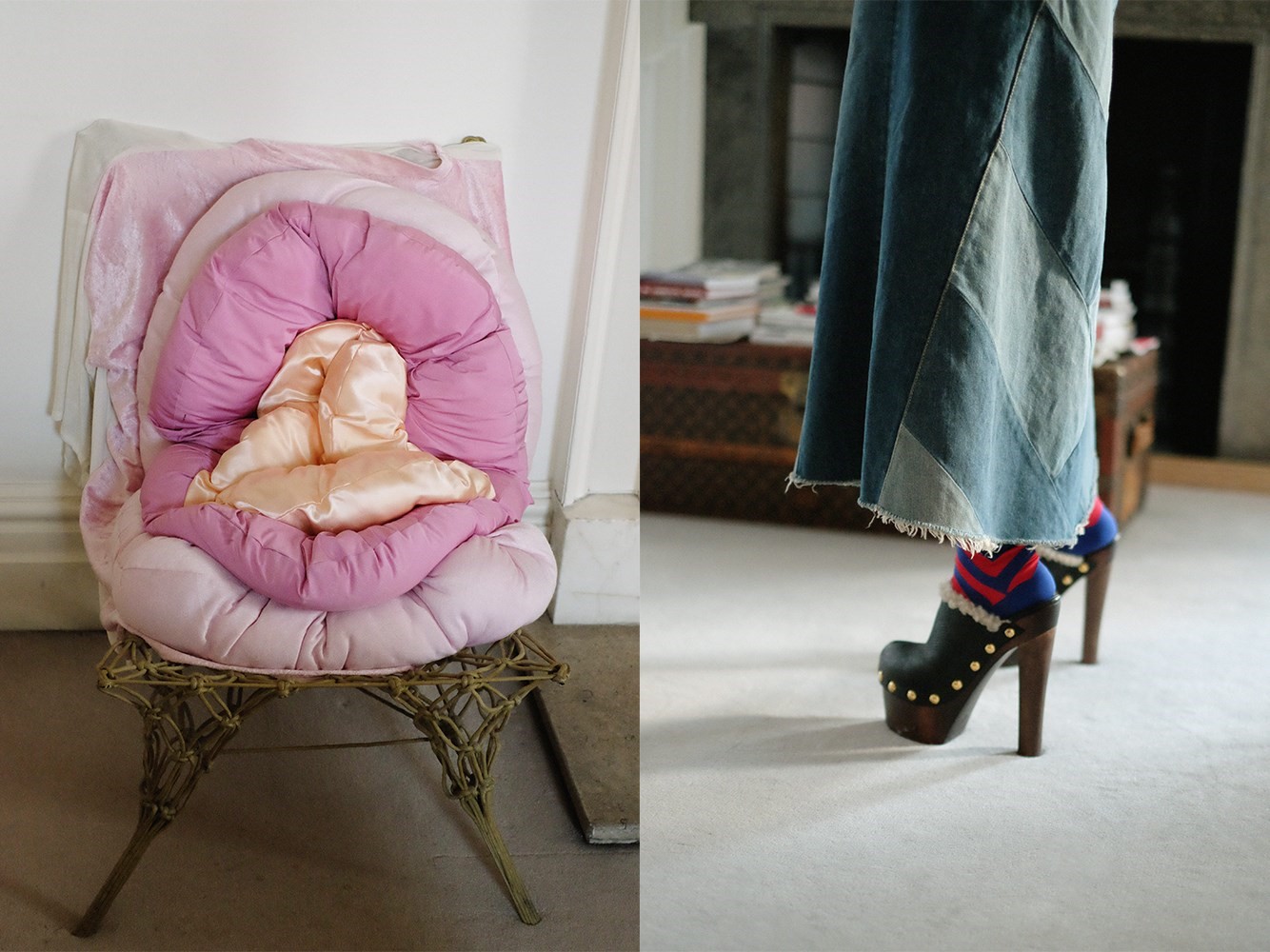
"This is not just about women, it is about dismissing incredible talent. Art history belongs to everybody, it's not just a society made out of Caucasian males" – Valeria Napoleone
When Napoleone speaks, it’s unequivocally clear that her drive to support female artists, regardless of their age, situation or economic status, is heart-warmingly genuine. In fact, she thrives on it. “Acquiring works from women artists wasn’t a business strategy, it happened organically because I really love what I do. People know that I don’t buy to sell, that I’m not doing this for investment,” she says. “I do this to contribute to the artist and support them in a moment of their life when nobody is looking. My job is of loyalty, of dedication and engagement with the artist and I feel very privileged to do it.”
This motivation, in turn, allows her to make decisions that come from a nurturing and positive place, one that’s rooted in modern feminism; further affirmed by her role at Studio Voltaire, a not-for-profit contemporary arts organisation in Clapham, and her newly established initiative Valeria Napoleone XX, which strives to equalize the representation of male and female artists in museum collections in the UK and US. “All of this is not just about women, it is about dismissing incredible talent,” she affirms, adding. “Art history belongs to everybody, it’s not just a society made out of Caucasian males.” I nod my head fiercely in agreement, before asking which exciting new works she is keen to acquire next.
“Well, I have a wishlist, or rather a list of wishful thinking,” she responds, while scrolling through a lengthy list on her large smartphone. “Jennifer Packer is a young American artist, who I think is really quite exceptional. I also have my eye on Lucy Kim, a South Korean painter who is now based in New York and has a mind far beyond her 20 years of age,” she says. “People are really starting to talk about Guan Xiao too, who is set to have a solo show at the ICA in the near future. She makes these incredible, crazy sculptures that draw parallels between new and old China – like that [points to an unusual inky-black sculpture in the corner of the room that's happily casting shadows with its jutting umbrella appendix].”
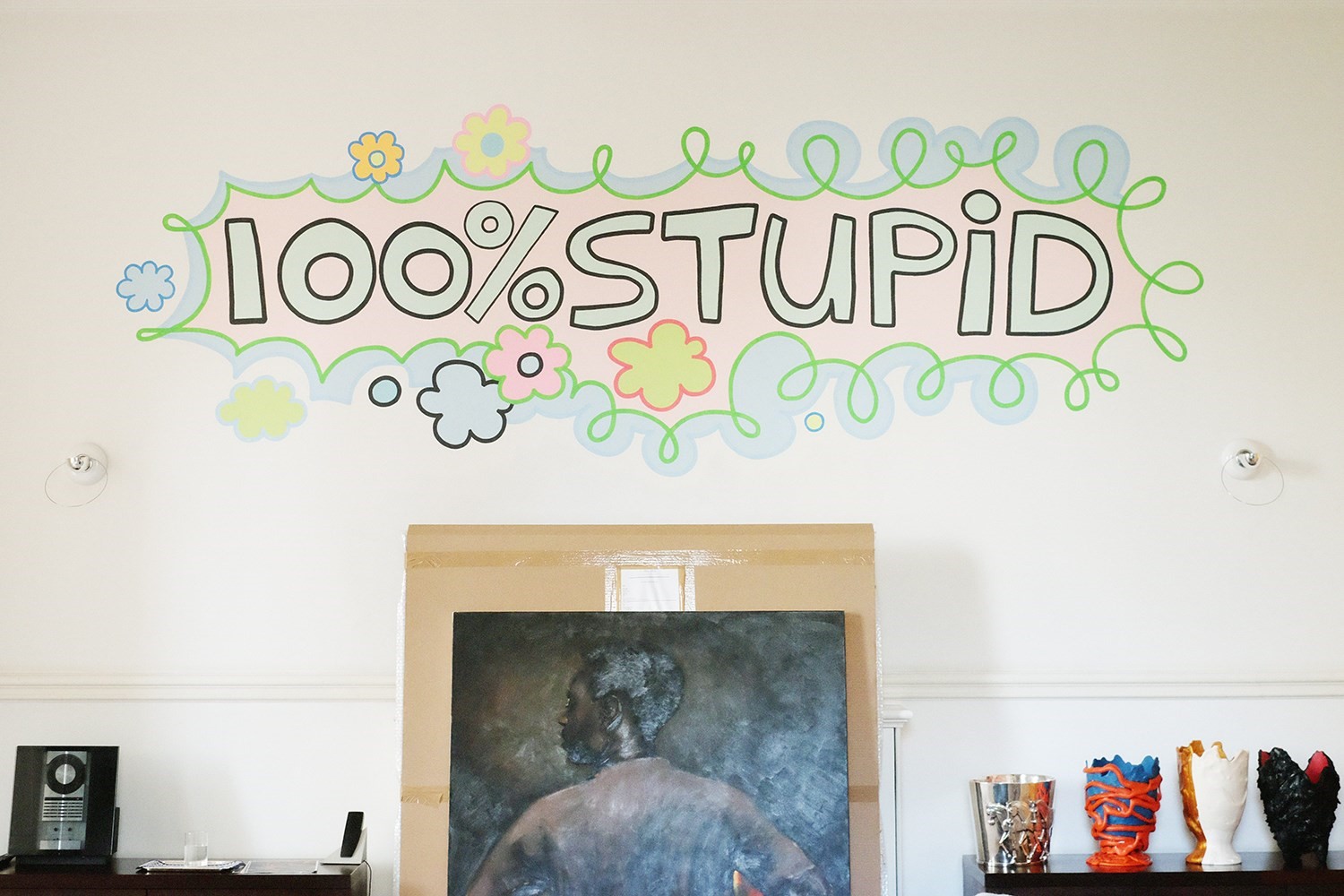
As someone so well versed in the delicate precedents and hierarchy of the contemporary art world, what, I ask Napoleone, does she feel are the main challenges still facing female artists today? “Well, things are evolving,” she replies softly. “But it’s still a boys club. The vast majority of the biggest museums in the world are directed by men, though we can now say the Tate Modern has a women at its head. I think now, we need to listen to the artists themselves,” she adds. “Women artists don’t want to be fashionable, they want to be part of the fibre of art history. It’s necessary to look into the dynamics of these artists, to understand their practice, their motivation and what is needed to be relevant. That is what I’m working on.”
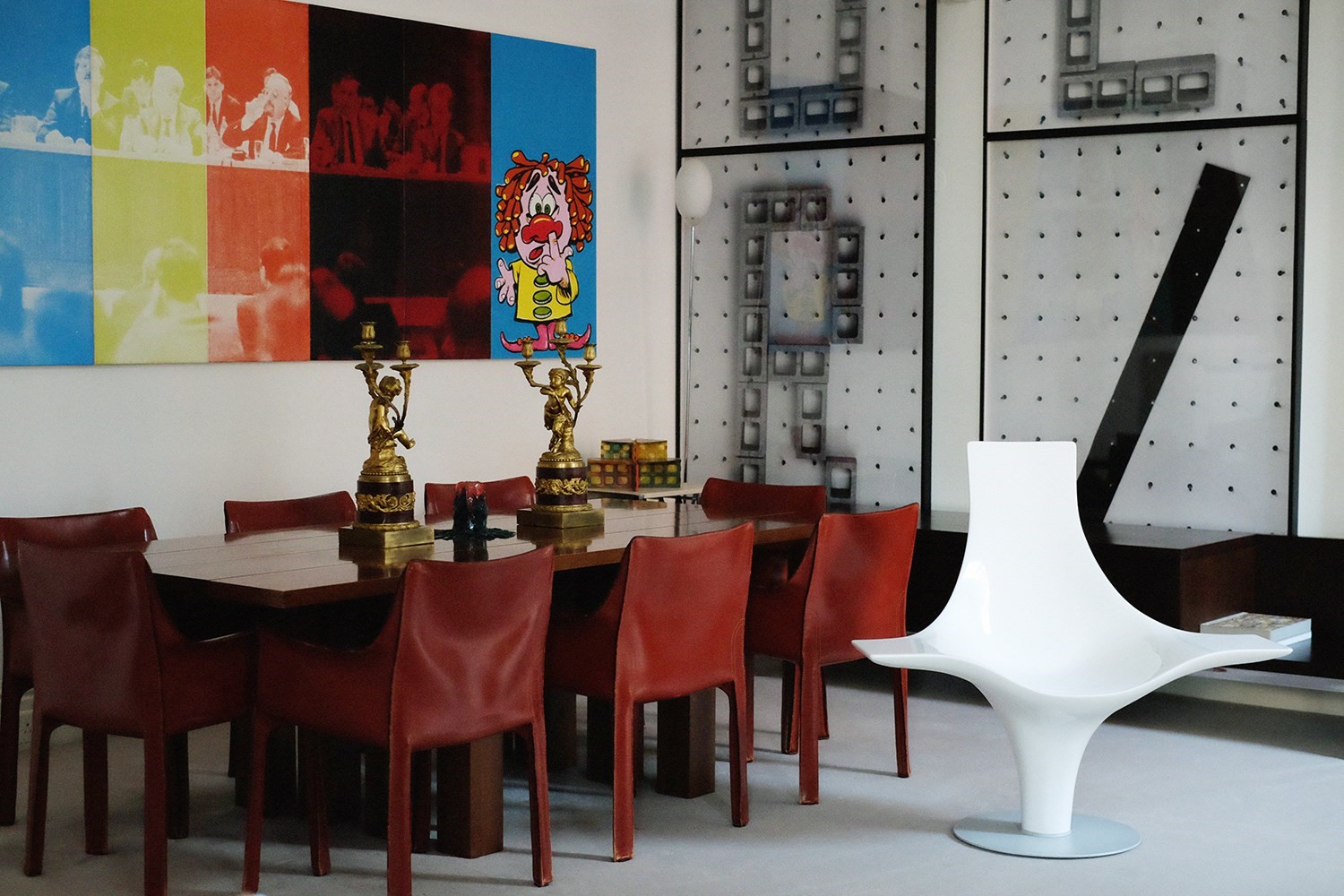
With very special thanks to Valeria Napoleone.
